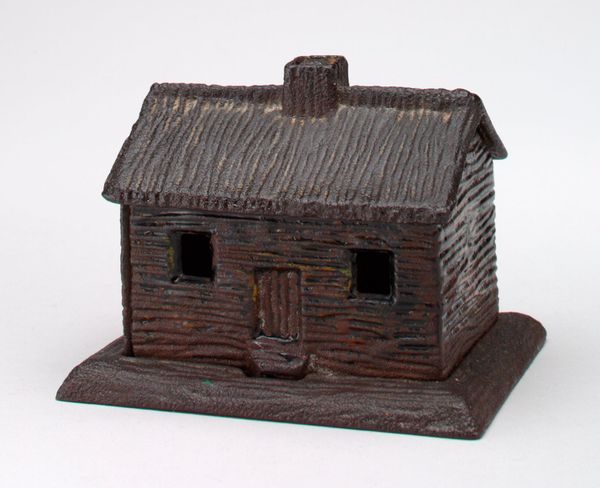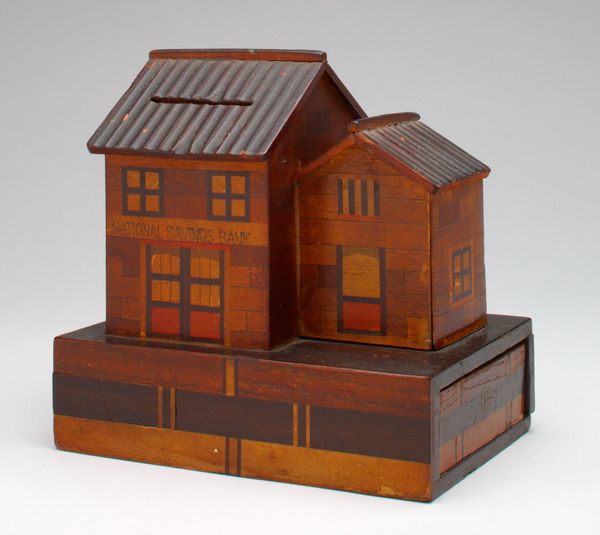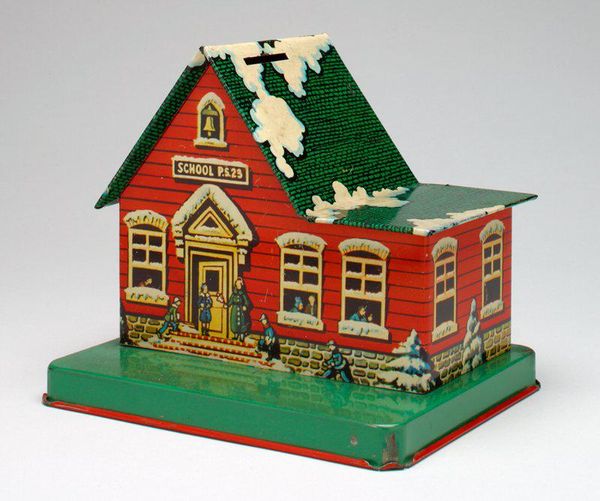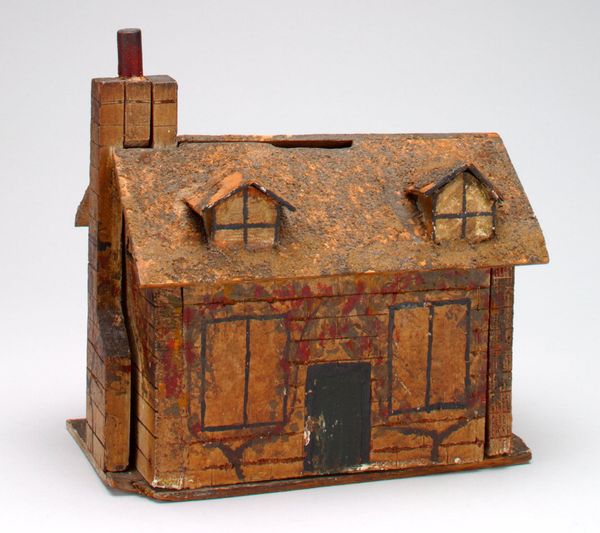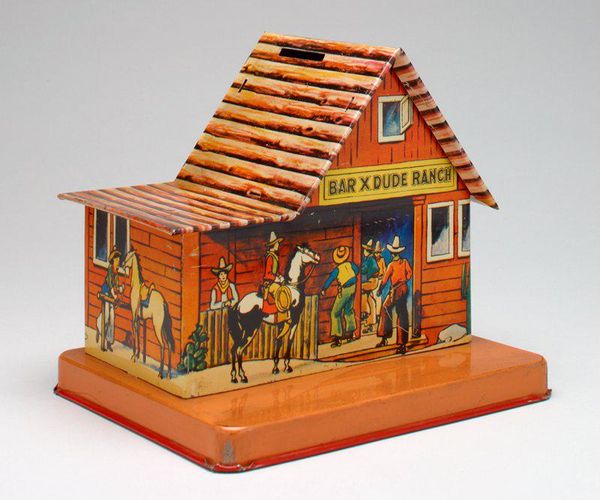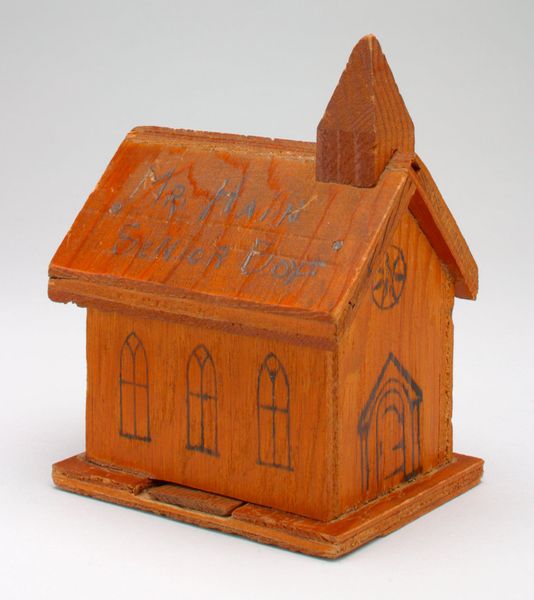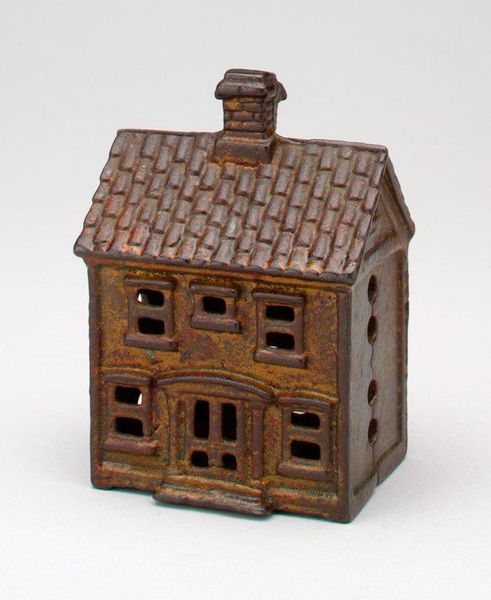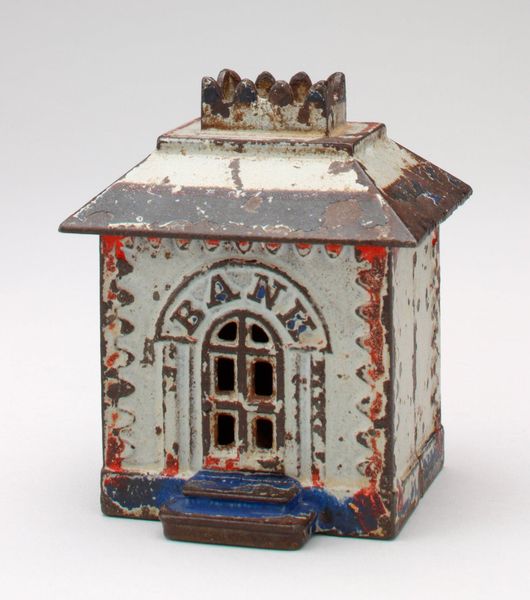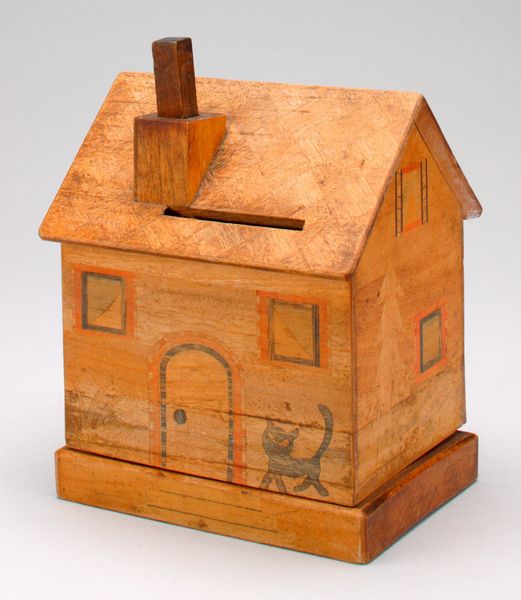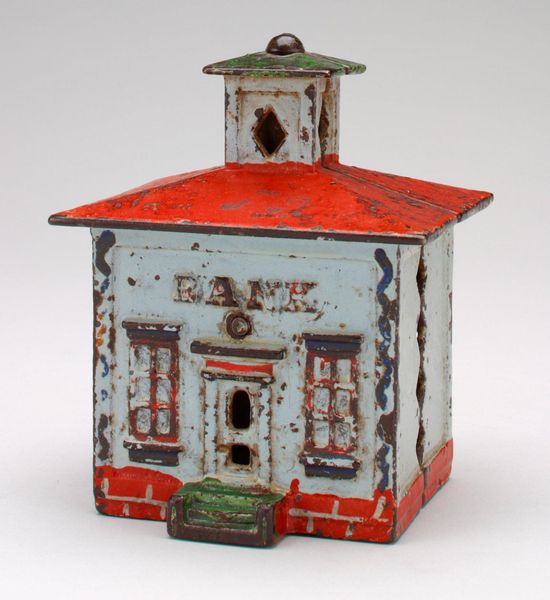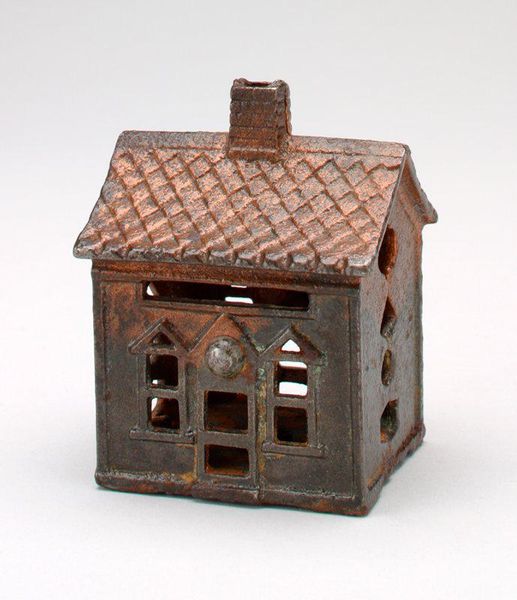
painting, wood
#
painting
#
folk-art
#
wood
#
miniature
Dimensions: 4 1/16 x 4 1/16 x 2 9/16 in. (10.32 x 10.32 x 6.51 cm)
Copyright: Public Domain
Curator: Here we have what’s known as a "Farm Bank" still bank, likely dating to the early 20th century. It's currently part of the collection at the Minneapolis Institute of Art. Editor: Oh, it’s incredibly charming! A miniature wooden house, painted in naive style. There's a childlike quality that really disarms you, doesn't it? Curator: Absolutely. And beyond the immediate impression, consider the layers of meaning embedded within such a seemingly simple object. The form of the house as the universal symbol of shelter, security, the building block of a community. What comes to mind for you? Editor: Well, looking at the materials, the roughly-hewn wood and the thick layers of paint speak volumes. The visible tool marks tell a story of labor and resourcefulness. It looks like the anonymous maker prioritized function and expression over pristine craftsmanship, a reflection of the era perhaps? Curator: I think you’ve hit on something vital. It’s a symbol of the aspirations of rural life in that period—an embodiment of the dream of owning land and a home, and building future prosperity. But I'm also curious about the flowers painted beneath the windows. What might those suggest? Editor: Ah, the addition of those simple blossoms transforms the austerity of the building's shape. It humanizes the structure. Was this sort of personal flourish common? It certainly lends a warmness and vibrancy. Curator: That type of imagery, a nod to both productivity and the aesthetics of simple joys, was frequently woven into similar domestic scenes. These artistic interventions also speak to folk art traditions in early rural America, I suspect. Editor: I am just marveling at how such ordinary materials—wood, nails, and some pigment—are transformed into this potent emblem of agrarian life. The very act of constructing and painting it elevates it beyond mere utility. It speaks to the aspirations and economics of the household. Curator: Yes, exactly. It prompts questions about who owned this bank, who made it, what kind of 'farm' did they imagine as they saved their coins? What futures did they imagine within it? Editor: Thinking about the object's lifecycle really brings to life not only the hopes but also the uncertainties that existed for the families who lived within and built up such structures in America's rural heartland. Curator: Precisely. In that way, it functions as both artwork and cultural artifact. Thank you, this little bank certainly houses an amazing wealth of concepts!
Comments
No comments
Be the first to comment and join the conversation on the ultimate creative platform.

